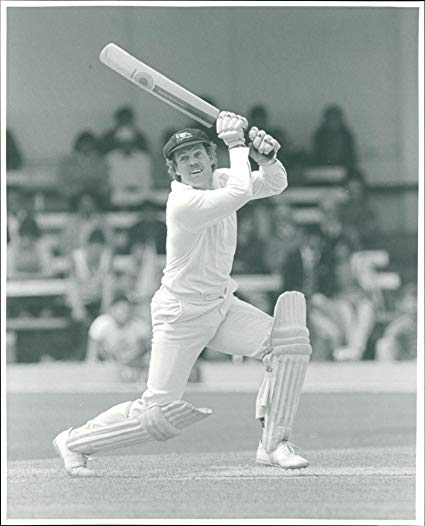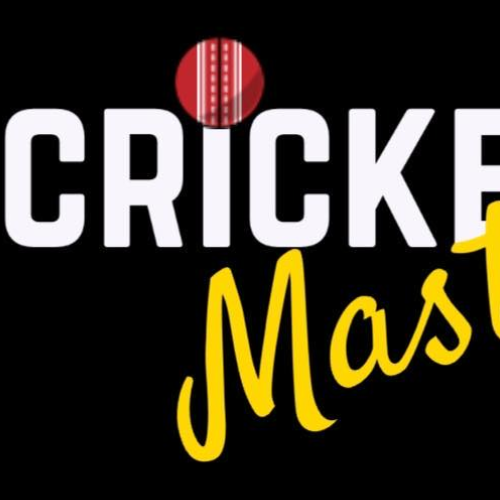After World Series Cricket in 1979 you started playing for Gordon in the Sydney Grade Competition as well as for the NSW Blues. How did you find cricket in Sydney in comparison to Adelaide and Perth?
I spent almost three years in WA playing for Scarborough, after joining WSC in 1977, we were banned from playing grade cricket. WSC only spent about a week each season in WA and the rest of the time was spent traveling up and down the East Coast, which is why I decided to move to Sydney. Once the amalgamation of WSC and ACB came about I decided to stay with my decision to move, which I am pleased I did, the way things have worked out.
The grade cricket in Sydney was not dramatically different to either Adelaide or Perth. History probably reveals (I haven't researched this) that the Sydney competition has produced far more international cricketers than the other two combined, and you can probably throw in Brisbane and Tasmania also. One of the advantages NSW has is population, which will throw up more possible choices. Also the number of larger country areas with strong feeder competitions.
One thing I have noticed in my four seasons back involved with premier cricket, as a coach, is that the wickets do not offer the variation of surfaces that they once did; some would favor spin, some pace and some batting. It seems to me now that they nearly all favor batting to the exclusion of bowling; a problem in this country not restricted to premier cricket, it is the main reason I watch very little international cricket in Australia these days, the wickets are to batting friendly.
What was the highlight of your playing days in Sydney Grade Cricket?
When I was later at North Sydney we won a one day competition and played in a grade semi final.
I think the main reason you play a team game is to achieve something on a team level. Personal success is great to have and absolutely required if you hope to move up the levels. If it helps the team to achieve a goal, all the more pleasing.
Which grade ground in Sydney did you enjoying playing at the most?
The little bit that I played at Manly Oval I found it, one a great venue, and two the wicket gave both batsmen and bowlers a chance; there was some pace, bounce and movement, which obviously would help the quicks, but you could also play your shots with confidence. That to me is a good cricket wicket, where everyone has an equal chance if they are good enough to exploit the conditions.
Who was the best bowler you played against in grade cricket?
There were a lot of good bowlers around, not so many out and out fast bowlers, I fortunately missed the days of Pascoe and Thomson at Bankstown together. There were quite a few that played a little bit of first class cricket during their careers, but I think a guy who certainly caused me some trouble was Gary Bensley from Randwick. He wasn't overly quick but deceptive, very accurate, a bit of swing and seam, would bowl a lot of overs and was particularly fond off the Coogee track.
Was there a particular batsman you found difficult to get out?
Rodney Davidson from Sutherland, nearly always made big runs against North Sydney, I don't remember playing against him for Gordon, but if I did he probably made runs.
Who did you consider to be the best fielders in Sydney Grade?
When I later played for North Sydney as captain/coach, in the last four or five season that I played grade cricket, we had two guys that were very good fielders; Graham Spring in the slips and Vernon Kringas in the infield.
Springy was as good a slips fielder as I have seen in grade cricket and would have held his own as a slipper in higher ranks, he did play one shield game and at least one 50 over game for NSW. Vern was a very quick mover both sideways and in pursuit of the ball in the infield, he also had good hands.
What was the funniest moment you can recall from your playing days in Sydney?
North Sydney were playing a game against Uni NSW at North Sydney number 2 ground, in the mid 1980's, when the North Sydney main ground was being redeveloped. Norths batted first and were in a lot of trouble early, we had one player left at the crease that could get us a score to defend, that was Chris Fox.
Chris had not scored many when he chipped a ball high into the air towards Jim Dixon (Uni) fielding at mid-on, for what appeared to be a certain dismissal. Jim moved forward to about the same level as the bowlers end stumps, as the ball was lobbing gently into his waiting hands the bowlers end umpire decided he needed to be square of the wicket, in case he had to adjudicate on a run out, which was unlikely in the circumstances.
As the umpire hurried towards his position he collided with Jim Dixon, who along with the umpire went to ground, closely followed by the ball. The Uni team certainly would not have found the situation particularly amusing, however it was very fortunate for the North Sydney team as Chris Fox scored about 80 and kept us in the game.
When did you start coaching and with which club?
I had been captain coach for a few seasons at North Sydney in the mid to late 1980's. After retiring as a player I got back into coaching with the Gordon Women's club in the early 1990's, so I am now back where it started so to speak. In between there hasn't been any club coaching, mainly schools and some overseas stuff.

You were renowned as one of the best fielders in Australia, how important is fielding in your coaching at grade level?
I was always taught that fielding is a vital part of the game and as you spend more time in the game doing that than anything else you should enjoy it. Fortunately I loved that part of the game and took the attitude with the batsman that I was putting out a challenge for him to try and score runs in the area where I was positioned. I was intent on trying to stop every single, the well hit shots, run somebody out if I got the chance and catch any ball hit in the air. So I try to get this idea across to players that I coach, to offer out a challenge to the batsman, and try to make some wickets for your team; either by run out, catch or helping the bowlers force them into a risky shot.
How many sessions or hours a week should grade players be practicing in order to improve their chosen skills and fielding?
I think the number of sessions or amount of time is a personal choice, although these days’ players seem to do some things because they feel they need to fill in some time. Whether it is batting, bowling or fielding you don't want to be doing it because you feel someone else expects you to.
Having said that, in a club situation you need to balance out the requirements of all players, so particularly bowling, you can be required to do more work than you may like to.
It seems to me these days, another problem is that there are too many players that don't bowl at all in the nets, which puts a larger than necessary work load on those that do bowl. Close to game day if you are hitting the ball well, the ball is coming out well as a front line bowler, the arm is good, the hands and the feet are going where you want them to, I don't see any point in hitting, bowling, throwing or catching more than you need to.
We understand your coaching at Gordon is to coach and help the next generation of first grade players. What attributes do you look for in a 3rd or 4th grade player and think they’re a potential first grade player?
I think the main thing to look for with any player moving up the grades is, are they up for the competition at the next level. Do they perform well, at whatever they do, when the situation gets a bit tough, or do they only perform when the going is easier. That can mean a lot of different things besides taking bags of wickets, or making piles of runs, particularly in the case of a young player. It might mean hanging around with someone else, who makes most of the runs, but without that support, the job would have been a lot more difficult. Or it might be a bowling partnership, where a good support spell is bowled, that doesn't bring a lot of wickets, but keeps the pressure on for the bowler at the other end.
Are there any young players in the club you’d be prepared to nominate as players to watch for season 2019/20?
There are some good young players at Gordon this season, some of whom I am sure will make a name for themselves in the years to come; however I would prefer to refrain from nominating any.
There’s a lot of talk around participation rates in cricket throughout Australia. Do you think Cricket in Australia is in a good place or do you have some concerns?
I do have some concerns, in most capitals and probably many country areas also, with the changing population demographic, cricket is no longer the number one sport of many of the new arrivals. This poses a problem for cricket administrators, how do they attract future generations of these families to the traditional summer game in Australia. That is not an easy question to answer.
Another problem I see, at the top end, is the sameness of the wickets prepared. Gone are the days where every states major ground presented differing conditions to the players; which was a great advantage to the Australian team, because of familiarity with those conditions. It also meant a balanced attack of pace and spin was required. Current conditions favor batting to heavily; to me cricket, to be truly exciting to watch, is a game that needs the favor slightly with the ball. Not to the extent that batting becomes too difficult, but a wicket with pace, bounce and some sideways movement, either seam early in the game, or spin later. That is why it is called Test cricket.
What advice would you give to a young teenage boy or girl who loves the games and wants to play at the highest level they can?
The early years are when most of the long hours of learning are put in, hitting, bowling, throwing and catching balls. Particularly for batting and bowling a variety of surfaces to play on is vital. When I was learning it was done, on the back lawn, the road, the beach, and later a lot on a turf wicket in the back yard, and in an unstructured way.
These days most of the learning is on synthetic surfaces where the bounce is consistent and it seems to be in practice situations, not just play; where getting out is not that important, because your turn will come around again soon. You learn in that way, how to adapt to the different pace and bounce of the various surfaces; it doesn't come as a complete surprise when you move from synthetic to an under prepared turf wicket, where one ball shoots and the next rises up. To many other distractions in the lives of young people, now days, means that the play aspect of learning is not as prevalent, as it once was. If you can incorporate some of this type of learning into the early years, I am sure it will be a huge benefit.
Join the cricket network to promote your business and expertise. Make it easy for people to search and find the people and services they need through people they know and trust.
Join the network







